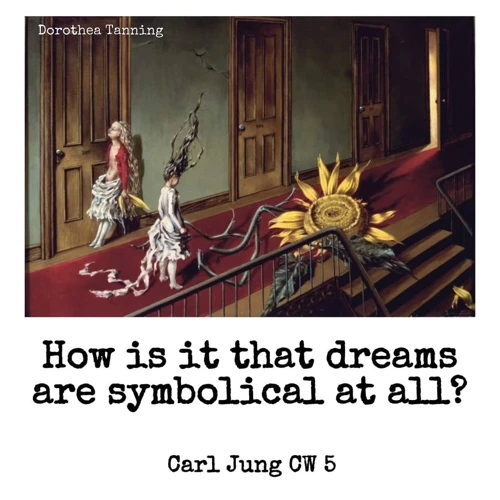Have you ever woken up from a dream, feeling haunted by its mysterious messages? Dreams have long fascinated and perplexed humans, as they offer a gateway into the subconscious mind. But what do these hidden messages really mean? In this article, we will embark on a journey of understanding, decoding the complex language of dreams and exploring what it means when someone is trying to convey a message to you through this enigmatic realm. From deciphering symbols to analyzing dream conversations, we will delve into the intricacies of dream communication. So, let’s unravel the secrets of the dream world together and discover the profound messages that may be hiding within.
Understanding Dreams

Dreams are a fascinating aspect of human existence, acting as portals to our subconscious mind. They hold immense meaning and can offer valuable insights into our deepest thoughts, emotions, and desires. When we unravel the mysteries of our dreams, we can gain a deeper understanding of ourselves and the world around us.
- The Significance of Dreams: Dreams hold significance because they often mirror our waking life experiences and emotions. They provide a safe space for us to process and work through unresolved issues or fears.
- Types of Dreams: Dreams come in various forms, each with its own unique purpose and symbolism. From vivid, lucid dreams to prophetic dreams that offer glimpses of the future, each type carries its own clues and meanings.
- Interpreting Dream Symbols: Dreams are often filled with symbolic imagery that requires interpretation. Common symbols such as water, animals, or even specific objects can hold deep personal significance and uncover hidden messages.
1. The Significance of Dreams
When it comes to understanding dreams, the significance of dreams cannot be underestimated. Dreams act as a mirror, reflecting our experiences, emotions, and subconscious thoughts. They provide a unique platform for us to process and work through unresolved issues or fears. By paying attention to the themes, emotions, and symbols that arise in our dreams, we can uncover valuable insights and gain a deeper understanding of ourselves and our lives. Dreams also have the potential to offer guidance, inspiration, and even reveal hidden desires or fears we may not be fully aware of. Exploring the significance of our dreams allows us to tap into an incredible source of self-awareness and growth.
2. Types of Dreams
Understanding the different types of dreams can help us unravel their unique meanings and messages. Dreams come in various forms, each with its own purpose and symbolism.
- Lucid Dreams: Lucid dreams are dreams in which the dreamer becomes aware that they are dreaming. This heightened state of consciousness allows individuals to actively participate in and manipulate their dreams.
- Prophetic Dreams: Prophetic dreams, also known as precognitive dreams, are dreams that seemingly provide glimpses of future events or situations. While the exact nature of these dreams remains elusive, they can offer insights into potential outcomes.
- Nightmares: Nightmares are intense, distressing dreams that evoke negative emotions such as fear, sadness, or anxiety. These dreams often reflect our deepest fears or unresolved traumas, and exploring their symbolism can aid in healing and personal growth.
- Symbols and Archetypes: Dreams are filled with symbols and archetypes, such as figures from mythology or collective cultural knowledge. Exploring these elements can provide valuable insights into our subconscious mind and the collective unconscious.
3. Interpreting Dream Symbols
Dream symbols serve as a language of their own, often carrying deeper meanings and insights into our subconscious. Understanding and interpreting these symbols is crucial in unlocking the messages hidden within our dreams.
- Different interpretations: Dream symbols can have various interpretations depending on personal experiences and cultural references. For example, dreaming about a snake can represent transformation, healing, or deceit, depending on the context and the individual’s associations with snakes.
- Personal symbolism: It is important to consider the personal significance of symbols in dreams. A specific object or person may hold a unique meaning for the dreamer based on their own experiences, memories, and emotions.
- Context is key: The context in which a dream symbol appears is crucial for interpretation. Analyzing the setting, emotions, and other elements of the dream can provide valuable clues about the symbol’s intended message.
- Using dream dictionaries with caution: While dream dictionaries can provide general interpretations for common symbols, it is essential to remember that personal context and associations play a significant role in deciphering dream symbols. It is best to use these resources as a starting point and trust your own intuition when interpreting your dreams.
Communicating in Dreams

Communication in dreams is a complex and intriguing phenomenon. It goes beyond mere symbolism and taps into shared symbols and personal connections. Understanding how this communication occurs can provide valuable insights into the messages being conveyed:
- Collective Unconscious and Shared Symbols: Dreams can tap into the collective unconscious, a universal pool of symbols and archetypes. These shared symbols hold meanings that transcend individual experiences and connect us on a deeper level.
- Personal Connections and Emotions: Dreams often feature familiar faces or people we have emotional connections with. These dream characters may be trying to convey messages through their presence, actions, or words.
- Analyzing Dream Conversations: Paying attention to the conversations that take place within dreams can offer valuable insights. The words exchanged, the tone of voice, and the emotions expressed can all provide clues about the message being conveyed. Click here to learn more about dreaming of a deceased loved one.
1. Collective Unconscious and Shared Symbols
The collective unconscious plays a crucial role in dream communication, connecting us to a vast repository of shared symbols and archetypes. These symbols have been ingrained in human consciousness throughout history and are embedded in our dreams, transcending cultural boundaries. The serpent, for example, often represents transformation and rebirth, while water signifies emotions and the subconscious mind. These shared symbols enable us to tap into a collective wisdom, allowing for a deeper understanding of ourselves and the world around us.
2. Personal Connections and Emotions
In the realm of dreams, personal connections and emotions play a significant role in decoding the hidden messages. Dreams often tap into our deepest emotions, allowing us to experience unresolved feelings or connect with individuals who have impacted our lives:
- Connections with Others: Dreams can feature people from our past or present, including family, friends, or even strangers. These dream characters may represent aspects of ourselves or reflect the dynamics of our relationships.
- Emotional Resonance: The emotions we experience in dreams can vary widely, from joy and love to fear and sadness. Paying attention to the intensity of these emotions can provide valuable clues to the underlying message.
- Unresolved Issues: Dreams can bring unresolved issues or unexpressed emotions to the forefront of our awareness. They serve as a way for our subconscious mind to process these feelings and seek resolution.
By exploring the personal connections and emotions within our dreams, we can uncover hidden insights about ourselves and our relationships. It’s important to reflect on these elements and consider their significance in relation to our waking life experiences.
3. Analyzing Dream Conversations
- Recognizing Dream Characters: When analyzing dream conversations, it is essential to pay attention to the characters involved. Are they familiar or unknown individuals? Are they representing aspects of yourself or people from your waking life? Understanding the significance of these characters can provide valuable insights into the message being conveyed.
- Identifying the Message: Dream conversations can offer direct or indirect messages. Pay attention to the words spoken and the emotions conveyed. Is there a specific message being communicated? Reflect on the meaning behind the dialogue and the feelings evoked during the conversation.
- Paying Attention to Repetition: In dream conversations, certain phrases or themes may be repeated. These repetitions serve as a signpost to draw your attention to a specific message or issue. Take note of any recurring elements and explore their significance in relation to the overall message of the dream.
When Someone Is Trying to Tell You Something

Dreams often feature a variety of characters, some familiar and others completely unknown. When someone is trying to communicate with you in a dream, pay attention to the individuals involved. Is it a loved one, a friend, or a stranger? The identity of the dream character can provide valuable insight into the message being conveyed.
Deciphering the message in a dream requires careful analysis of the symbols and events that unfold. Consider the emotions and themes present in the dream. Is there a sense of urgency or significance attached to a particular symbol or action? By analyzing these elements, you can begin to unravel the hidden meaning behind the message.
Repetition is a powerful tool in dream communication. If a particular symbol, phrase, or scenario repeats throughout your dreams, it may be a clear indication that there is an important message trying to break through. Take note of these recurring elements and explore their deeper significance to unlock the message being conveyed.
1. Recognizing Dream Characters
Identifying the characters that appear in our dreams is crucial to understanding the messages they may be trying to convey. These dream characters can take on various forms – they might be familiar faces from our everyday life, mysterious strangers, or even fantastical beings. Paying attention to their presence and role in the dream can offer valuable insights into the message being communicated. Sometimes, dream characters can represent aspects of ourselves or people we know, serving as symbolic representations of our emotions, desires, or unresolved conflicts. By recognizing and analyzing these dream characters, we can begin to unravel the hidden meanings behind our dreams. To delve deeper into the symbolism of dream characters, you can explore the meaning of dreaming about being eaten alive.
2. Identifying the Message
When analyzing dreams, it is crucial to identify the message that is being conveyed. Dreams can act as a powerful form of communication, illuminating aspects of our lives that may be hidden or overlooked. Here are some key steps to help you in identifying the message within your dreams:
- Reflect on Emotions: Pay attention to the emotions you experienced during the dream. Emotions hold valuable clues to the underlying message. Whether it’s fear, joy, or confusion, these emotions can guide you towards a deeper understanding of the message being conveyed.
- Analyze Symbols: Look closely at the various symbols and imagery present in your dream. Symbols can be personal or archetypal and can carry profound meaning. Consider the context, your past experiences, and any cultural symbolism that may apply. For example, dreaming about eating candy could represent indulgence or instant gratification. (Learn more about candy symbolism in dreams)
- Connect with Intuition: Trust your intuition when deciphering the message. Sometimes, the meaning of a dream may not be immediately apparent, but your intuition can guide you towards a deeper understanding. Allow yourself to tap into your inner knowing and explore the subtle nuances within the dream.
3. Paying Attention to Repetition
If you want to truly understand the hidden messages in your dreams, it’s crucial to pay attention to repetition. When certain symbols, scenarios, or even people appear repeatedly in your dreams, it is a clear sign that your subconscious is trying to convey an important message. These recurring elements may hold significant symbolism or represent unresolved issues in your waking life. By acknowledging and exploring these repetitions, you can gain valuable insights and a deeper understanding of the message your dreams are trying to communicate. So, don’t dismiss the power of repetition in your dreams, as it may hold the key to unlocking profound revelations.
Interpreting Common Dream Scenarios
Interpreting common dream scenarios can provide further insight into the messages being conveyed to us while we sleep. These scenarios often hold symbolic meaning and can reflect our subconscious fears, desires, or unresolved conflicts. By understanding these scenarios, we can gain a deeper understanding of ourselves and the hidden messages within our dreams.
- Being Chased or Attacked: One common dream scenario involves being chased or attacked by an unknown figure or creature. This can symbolize unresolved fears or feeling overwhelmed by certain aspects of our lives. Exploring the source of these fears can help us confront and overcome them.
- Falling: The sensation of falling in a dream can be unsettling, but it often represents a lack of control or a fear of failure. It may indicate that we are feeling overwhelmed or out of balance in our waking life. Addressing these feelings of instability can lead to a sense of grounding and clarity.
- Flying: Dreams of flying can evoke a sense of freedom and empowerment. They often symbolize a desire for liberation, breaking free from constraints, or exploring new possibilities. Embracing this symbolism can inspire us to pursue personal growth and embrace our potential.
To dive deeper into the meanings behind these common dream scenarios and explore more dream interpretations, you can read our article on “what does it mean when you dream about being eaten alive?“.
1. Being Chased or Attacked
One common dream scenario that many people experience is being chased or attacked. This intense and unsettling dream can leave you feeling anxious and fearful upon waking up. But what does it mean?
- Symbolic Representation of Fear: Being chased or attacked in a dream often symbolizes feelings of fear, stress, or anxiety in your waking life. It may indicate that there are unresolved conflicts or challenges that you are trying to escape or confront.
- Running from Problems: This dream scenario could be a reflection of your tendency to avoid or run away from difficult situations or emotions. It may be a sign for you to face your fears head-on and confront any issues that you have been avoiding.
- Self-Protection and Empowerment: Alternatively, being chased or attacked could also represent the need for self-protection and empowerment. It may be a reminder for you to assert yourself and stand up for your boundaries, transforming fear into strength.
2. Falling
Falling is a common and often unsettling dream scenario that can leave us with a sense of fear or unease upon waking up. In the realm of dream interpretation, falling is often associated with a loss of control or a feeling of insecurity in our waking life. It could symbolize a fear of failure, a lack of stability, or an overwhelming sense of vulnerability. However, it’s important to consider the context and emotions surrounding the dream to fully understand its personal meaning. Whether it’s a physical fall or a metaphorical one, exploring the emotions and circumstances surrounding the dream can offer valuable insights into our subconscious fears and anxieties. So, the next time you find yourself plummeting in a dream, take a moment to reflect on your current circumstances and emotions to uncover the hidden messages and lessons that your subconscious mind may be trying to communicate.
3. Flying
Flying in dreams is a truly magical experience. It symbolizes liberation, freedom, and a sense of being in control. When you dream about flying, it often suggests that you are overcoming obstacles and rising above challenges in your waking life. It can also signify your desire for independence and a need to escape from the constraints of everyday life. Additionally, flying dreams can represent a heightened sense of spirituality or the ability to see things from a broader perspective. So, the next time you find yourself soaring through the sky in your dreams, embrace the feelings of empowerment and embrace the possibilities that await you.
Conclusion
In conclusion, dreams provide a powerful avenue for communication and self-discovery. By understanding the significance of dreams, delving into their symbolism, and analyzing the messages they convey, we can unlock valuable insights about ourselves and our lives. Dream interpretation is a deeply personal and subjective process, and it requires an open mind and a willingness to explore the depths of our subconscious. So the next time you find yourself lost in the realm of dreams, pay attention to the hidden messages, for they may hold the key to understanding yourself and the world around you.
Frequently Asked Questions
1. Can dreams predict the future?
While some people claim to have had prophetic dreams, there is no scientific evidence to prove that dreams can predict the future. Dreams primarily reflect our subconscious thoughts and emotions, offering insights into our current state of mind.
2. Why do we forget our dreams?
Forgetting dreams is a common occurrence due to the brain’s memory consolidation process. As we transition from dreaming to waking, the brain focuses on processing and storing essential information, causing dream memories to fade quickly.
3. Can dreams be influenced by external factors?
Absolutely! External factors such as stress, medications, and even the foods we eat can influence the content and intensity of our dreams. Pay attention to how these factors can affect your dream experiences.
4. Are nightmares a sign of something negative?
Nightmares are not always a sign of something negative. They can serve as symbols or warnings, highlighting unresolved fears or anxieties that need attention. Exploring and understanding their underlying messages can be beneficial in personal growth.
5. Can we control our dreams?
Lucid dreaming is the ability to be aware and conscious within a dream, giving us control over its elements. With practice and techniques like reality checks and dream journaling, some individuals can develop the ability to control their dreams to some extent.
6. Why do we dream in color?
Dreaming in color is a natural occurrence. The brain processes and retains memories of colors we experience, which are then integrated into our dreams along with other sensory information.
7. Do all dreams have meanings?
All dreams have some level of meaning, but it’s important to remember that not all dreams require deep analysis. Some dreams may simply reflect our daily experiences or random thoughts without significant symbolism.
8. Can recurring dreams have a specific message?
Recurring dreams often indicate that there are unresolved issues or patterns in our lives that need attention. Paying close attention to the recurring elements and emotions in these dreams can help unlock their specific messages.
9. Can dreams help with problem-solving?
Research suggests that dreams can aid in problem-solving by allowing our minds to explore different scenarios and perspectives. Dreams provide a unique space for creativity and insight, often leading to innovative solutions.
10. Should we share our dreams with others?
Sharing dreams can be a personal choice. Some individuals find solace and clarity by discussing their dreams with others, while others may prefer to keep their dream experiences private. Ultimately, it’s about finding what feels right for you.






